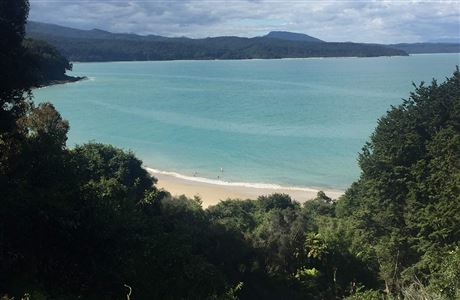Historic Port Craig Sawmill and Settlement Site
Introduction
Explore a ghost town and imagine life here when the Port Craig sawmill was the busiest in the country.During its operation Port Craig sawmill was the most technologically advanced and most productive mill in New Zealand. Today it is an archaeological site – the country’s most complete sawmilling complex featuring all stages and aspects of the timber industry.
Port Craig settlement
In 1916 the Marlborough Timber Company recognised the milling potential of the coastal forests of Western Southland. Over 150 men were employed, and they processed up to 1800 cubic metres of timber per month. At its peak the settlement at Port Craig had a school, a blacksmith’s shop, a wharf, a cookshop, a bakehouse, accommodation for the workers, and was home to the largest and most modern sawmill in New Zealand. In total about 1400 hectares of forest was logged from Port Craig, and the timber was shipped directly out to markets.
Sawmilling at Port Craig
The large scale of the operation required logging greater areas than those allowed for under forest regulations at the time. Instead of relying solely upon State Forest allocations the mill largely logged Maori land which had been granted under the South Island Landless Natives Act of 1906, by agreement with the owners.
Logs were carted to the mill along a 14.6 km long tramway which ran between Port Craig and the Wairaurahiri River. The tramway superseded a much earlier pack track, first cut in 1896 to provide overland access to Cromarty and Te Oneroa, gold mining settlements in Preservation Inlet. Four impressive viaducts were constructed to carry the tramlines over ravines. The largest of these, the Percy Burn Viaduct, was repaired by the Port Craig Viaducts Charitable Trust (which manages all four viaducts) with funding and support from the local community in 1994.
As the Depression approached, the demand for timber declined and the business venture struggled until finally it failed, and the mill was closed in 1928.
Today
The old wharf piles remain, along with the bakers’ oven and first mill, the Lidgerwood hauler chassis, and a Priestman wharf crane. You can stay in the Port Craig School, the only remaining building on the settlement site, which has been converted into a hut for trampers.
A short interpretive walk around the mill site provides an insight into the milling with panels and a self guided pamphlet. The tramway away from the mill to the workings features spectacular cuttings, and the Australian hardwood railway sleepers are evident along most of its length.
There is more detailed information about the history of the site in the Port Craig School and in the Port Craig Village Lodge operated by the Hump Ridge Track Trust, and on panels and in a pamphlet for the interpretative walk around the site.
Getting there
Get to Port Craig along the South Coast track, or as a freedom or guided walker along the Hump Ridge Track. Accommodation is available in the school at Port Craig which is managed as a back country hut.
The South Coast Track follows the mill tramway to the west of Port Craig as far as the Wairaurahiri River, and the Hump Ridge Track incorporates the section from Percy Burn Viaduct to Port Craig. It follows an easy gradient through stunning regenerating lowland coastal mixed podocarp forest.
Further reading
Bird, W. (2003) Viaducts Against the Sky (Craigs Printers and Publishers).



